Energy and Petroleum Labs
Center for Process Engineering Research
The CEM Energy Studies collaborates with the CEM Research Institute for labs and equipment to help advance research in energy technologies.
- Advanced Analytical Characterization
- Bench and Pilot Facilities
- Material and Thermal Analysis
- Modeling and Simulation
Drilling and Completion Lab (DRACOLA)
DRACOLA (Drilling and Completion Laboratory) is a comprehensive facility featuring a wellbore simulator, full-scale drill rig, and mud pumping capabilities. It enables testing of full-size drill bits under simulated depth, including overbalanced/underbalanced conditions, to assess performance, wear, deviation and dynamics. DRACOLA also evaluates drilling/coring fluid effects, bit balling, formation damage and core fluid invasion. The facility offers services to optimize drilling operations for industry, provides hands-on training, educates undergraduate students on practical drilling and supports graduate-level research addressing industry needs.
Capabilities
Large-scale Drilling & Coring Testing
- Bit, Fluid, Rock & Downhole Condition Effects on Drilling Penetration Rate
- Coring Performance and Core Damage Studies
- High Pressure Drilling in Shale with PDC Bits and Water-based Fluids
- Bit Deviation, Vibration, Wear and Novel Drilling and Coring Tools Testing
- Float Collar Drill-out and Milling Tests
Large-scale Completions Testing
- Borehole Stability & Open-hole Completions
- Sand Production Testing
- Unconsolidated Sand Completions Testing
- Conventional Perforating
- High Overbalance Perforating
- Hydraulic Fracturing and Cuttings Reinjection
- Horizontal Screen Loading
- Formation Damage, Fines Invasion, Kill Fluids, Acidizing, etc…
Drill Rig
The drill rig features a 6-foot stroke, a rate of penetration (ROP) of 200 feet per hour and a standard rotational speed range of 50-400 rpm (with a special range of 400-1000 rpm). It can apply 100,000 lbs of weight on bit (WOB) and accommodate bit sizes from 3.5 inches to 12.25 inches.
Large Mud Pump
The large mud pump, equipped with standard fluid ends, delivers 3,900 psi at a flow rate of 620 gallons per minute (gpm) or 5,500 psi at 440 gpm.
HP Fluid Ends
The HP fluid ends are capable of delivering 12,000 psi at a flow rate of 180 gallons per minute (gpm).
Small Mud Pump
The small mud pump delivers 3000 psi at a flow rate of 25 gallons per minute (gpm).
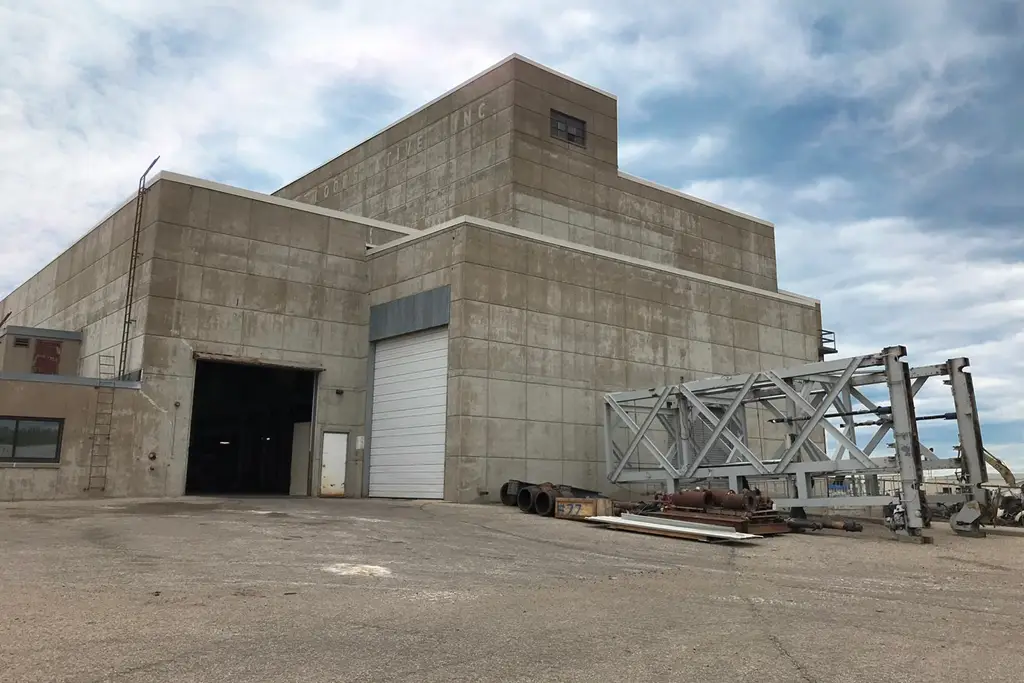
Geomechanics Lab
Auto Lab 500
The AutoLab 1500, developed by New England Research, is a triaxial rock testing system designed for comprehensive rock mechanics experiments. It measures mechanical and petrophysical properties under reservoir conditions, handling pore pressures up to 100 MPa, confining pressures to 200 MPa, and temperatures to 121°C. The system, comprising a pressure vessel, hydraulic pumps, an electronics console and software, performs various destructive and non-destructive tests, including permeability, Biot, velocity, resistivity, deformation and strength. It also calculates parameters like bulk modulus, shear modulus, Young's modulus, Poisson's ratio, strength, bulk compressibility, permeability, resistivity and P- and S- wave velocities.
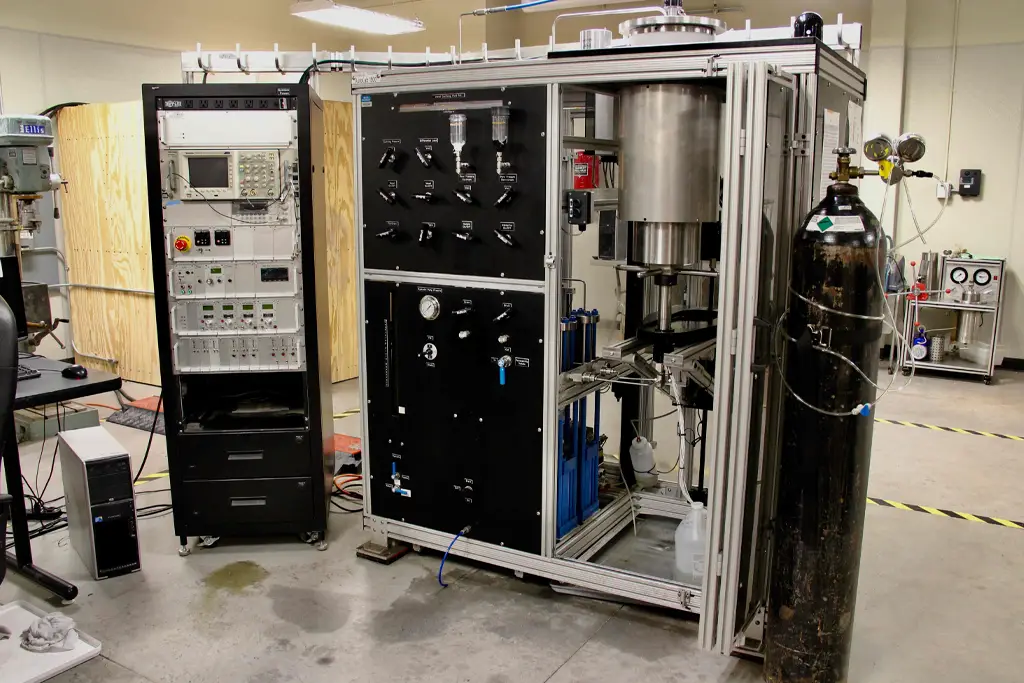
Uniaxial Compressive Strength
A high-force servo-hydraulic testing system is used to determine the Uniaxial Compressive Strength (UCS) of rocks, which is vital for geomechanical modeling. This system monitors stress against deformation using a rigid load frame with a fixed crosshead and two columns. An integrated actuator with a 100 mm stroke allows for large displacements. The system includes a differential pressure transducer and an internal linear variable differential transformer (LVDT) for precise control and measurement of actuator displacement. This equipment tests rock samples of varying sizes and diameters. The UCS and detailed lateral and axial deformation measurements from the LVDT transducers on the sample help estimate the rock units' mechanical properties.
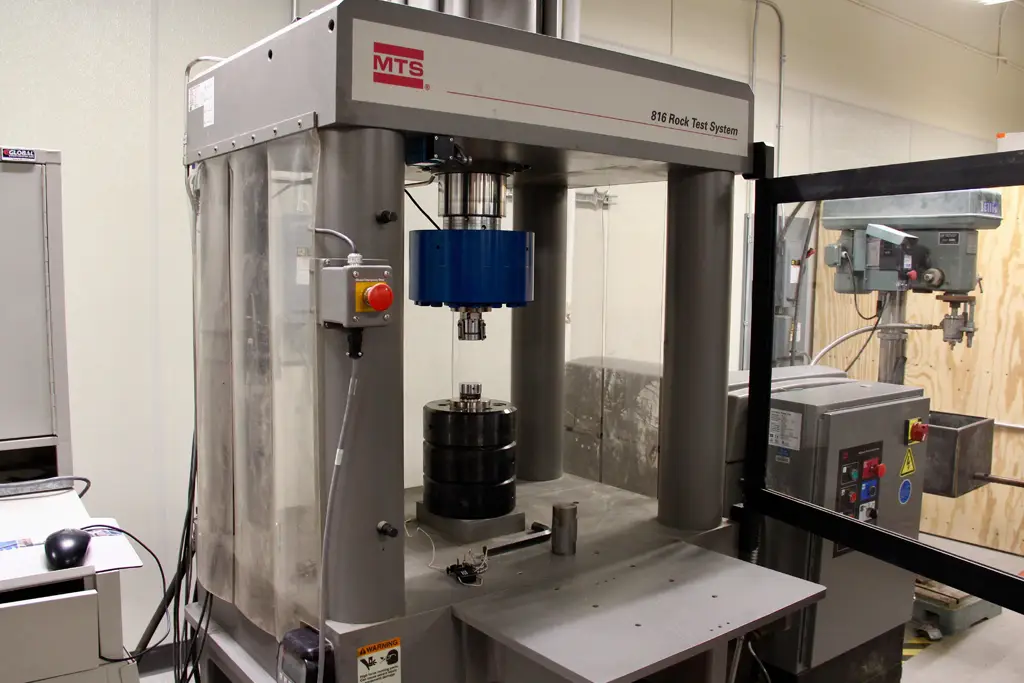
Hess Labs
Drilling Systems
In 2016, the University of North Dakota (UND) enhanced its petroleum engineering program by installing a full-scale drilling and well control simulator, the DrillSIM-5000, at its Collaborative Energy Complex. This simulator significantly expands teaching capabilities in oil and gas drilling and well control, meeting industry expectations for new graduates. The DrillSIM-5000 meticulously replicates a real drill-floor environment, offering students, researchers, and professionals a realistic training experience. Instructors can simulate various drilling and well control scenarios based on actual field events, allowing users to practice daily operations and safely manage hazardous situations. This full-scale simulation training, similar to practices in aviation and other high-risk industries, proves more effective for knowledge retention and long-term skill development than traditional methods.
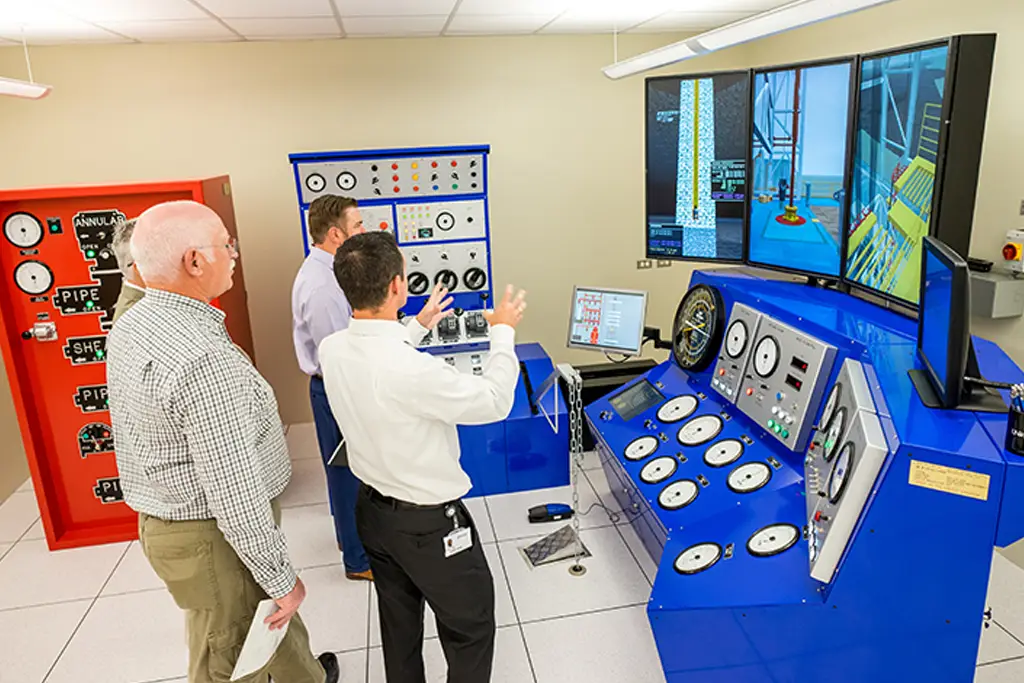
Innovation Lab
The CFS series facilitates accurate single and multiphase core flood studies under reservoir conditions. It evaluates crucial parameters like brine sensitivity, return permeability, critical flow velocity, and various secondary and tertiary Enhanced Oil Recovery (EOR) methods (e.g., water flooding, polymer, ASP, miscible/immiscible gas flooding, acid, and microbial treatments). The system can determine relative permeabilities, residual oil saturation, displacement efficiency, and incremental oil recovery. Controlled by unique software, it allows both manual and automated operation of pumps, valves, video capture, and data acquisition, including elaborate test sequences. All key components, including the core holder, are housed in an isothermal convective air bath for easy access.
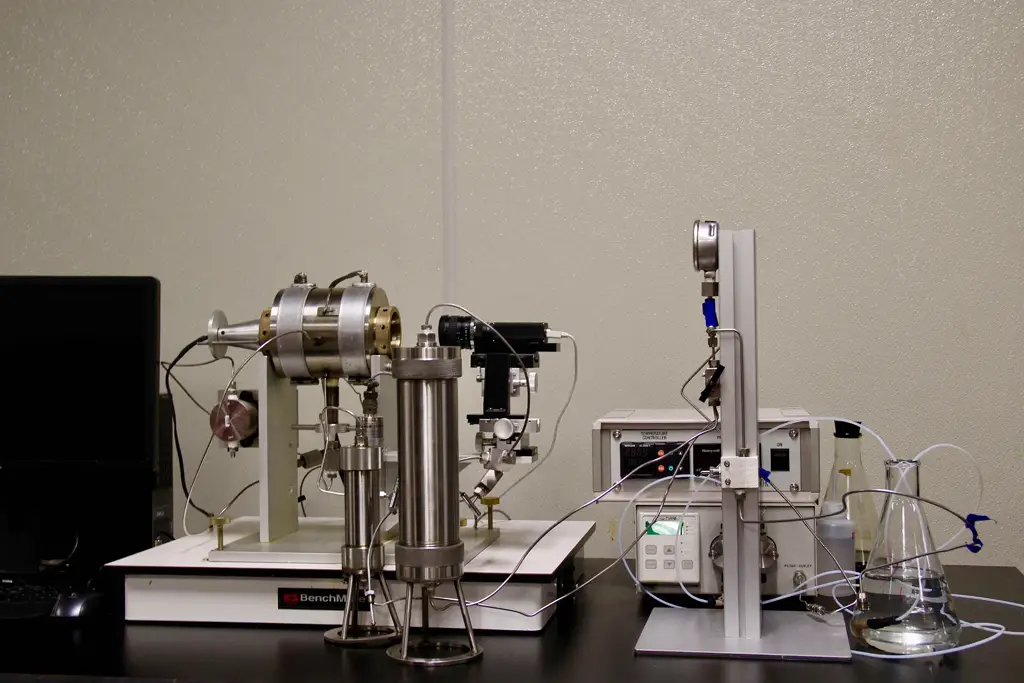
Virtual Reality
The Hess Virtual Reality Lab, located in the Collaborative Energy Complex, is the first VR training lab dedicated to oil and gas drilling. It offers detailed, interactive virtual models of modern drilling platforms, allowing engineers to practice operating drilling machinery and complex processes in a risk-free environment.
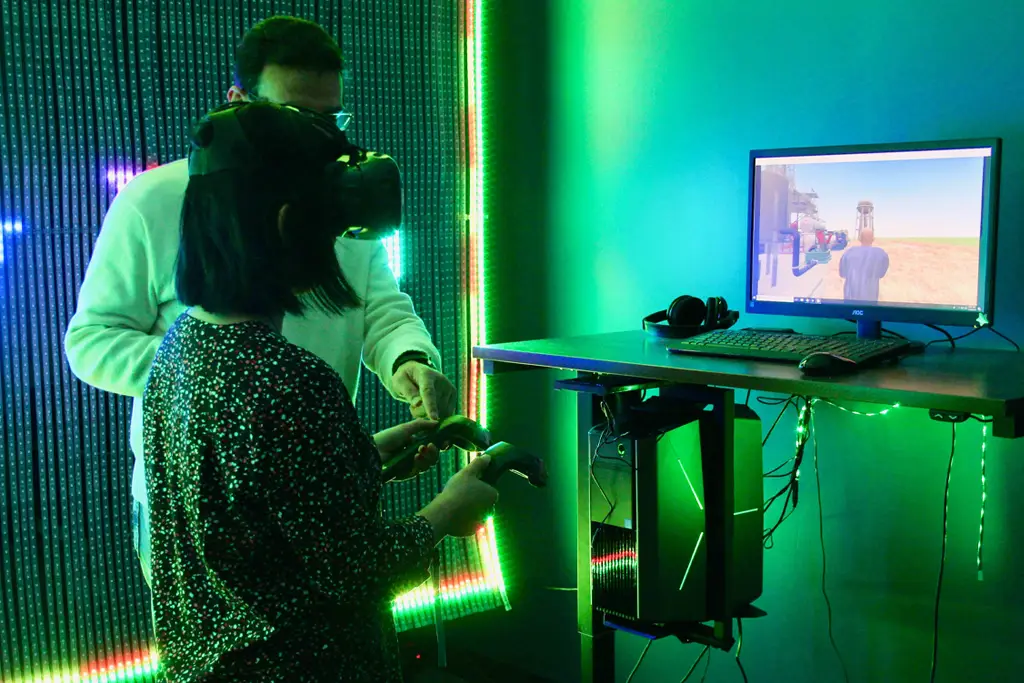
Multi-Phase Flow Loop Lab
The Multi-Phase Flow Loop (MFL) unit studies multi-phase transport in vertical (upward and downward) and horizontal pipes. It can simulate various flow regimes (e.g., bubble, slug, churn, annular) using different water and air superficial velocities. Equipped with instruments for pressure, temperature, and flow rate measurements, the MFL can simulate oil and gas transportation from wellbore to surface. The unit features a 6-foot long, 1-inch thick clear PVC test tube, which can be replaced as needed. Its data acquisition system provides real-time data collection, plotting, monitoring, and analysis.
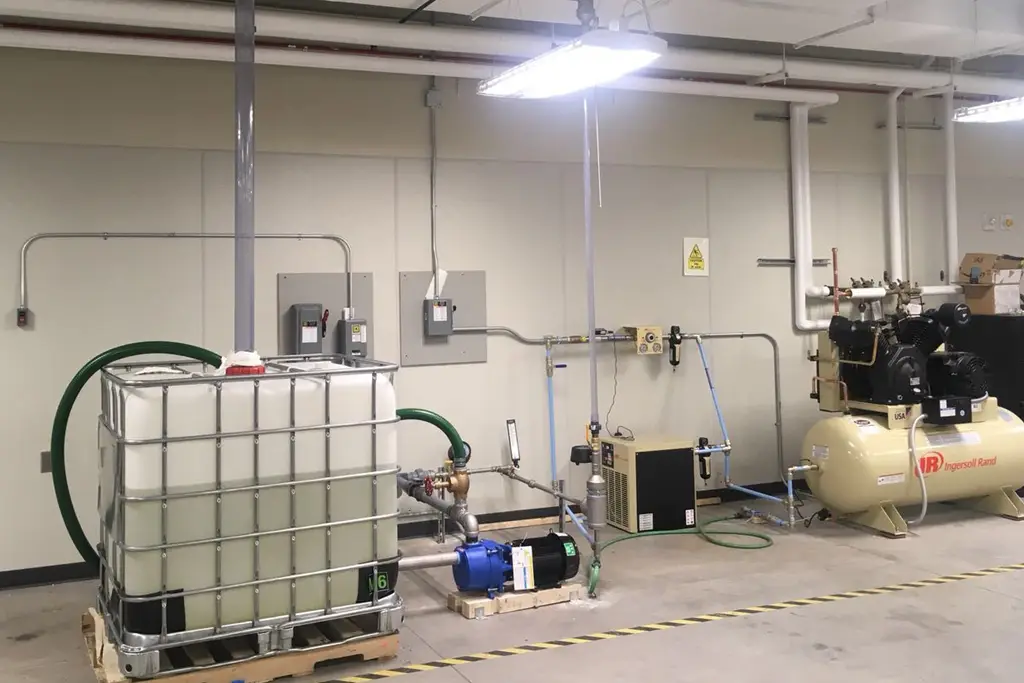
Pipeline Fluid Flow Simulation Labs
The fluid friction apparatus facilitates detailed studies of fluid flow, measurement techniques and pressure losses due to blockages and leaks in series or parallel pipe systems. A hydraulic bench provides controlled water flow. Pressure sensors and flowmeters, integrated with NI LabVIEW, measure pressure loss across blockages and leaks. The apparatus includes various pipe sections with different blockage sizes, lengths, or leakage point locations to demonstrate their impact on pressure loss. A piezometer set with a hand-pump measures pressure loss across components like roughened pipes and fittings. Flow rates are measured using Venturi and orifice meters, while a traversing Pitot tube can determine velocity profiles.
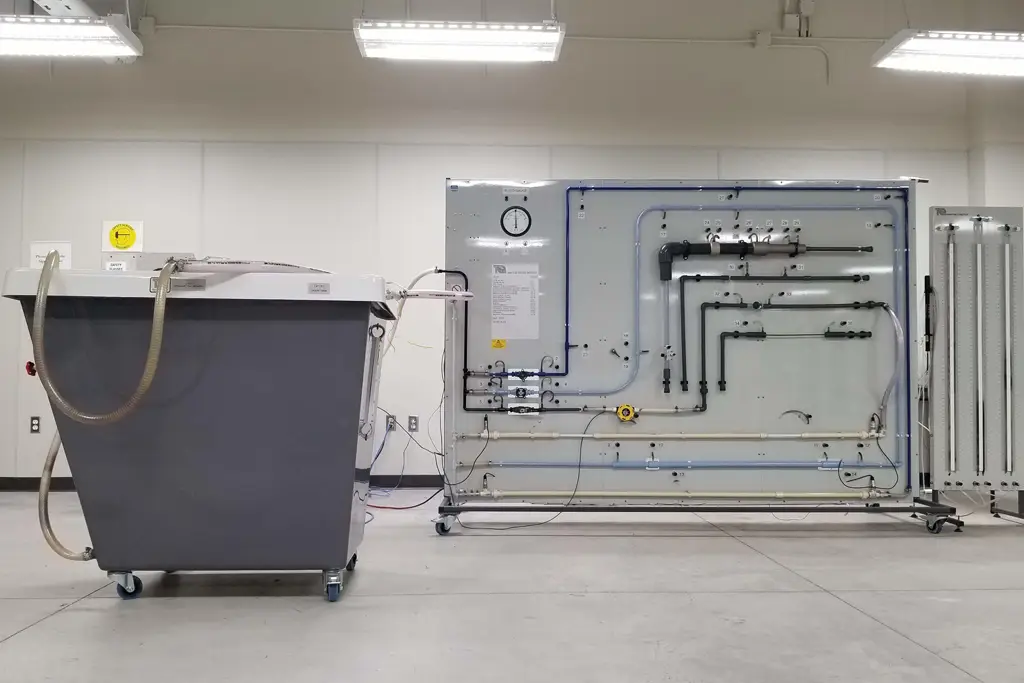
Slurry Loop Lab
The Slurry Loop Unit investigates cuttings transportation in vertical, horizontal and deviated annulus spaces. It allows for the study of how cutting geometry, drilling mud rheology, and flow rate influence flow profiles in the annulus, including homogenous/heterogeneous suspensions, moving/stationary beds, dune formation and boycott movements. The unit features ultra-precision instruments to measure fluid properties (viscosity, density), pressure drops, temperature, and flow rate ensuring high-quality data. The 15-foot annulus, comprised of a 5" drill pipe and 8" clear PVC tube, can be reconfigured for different annulus sizes. A real-time data acquisition system enables continuous monitoring and analysis.
